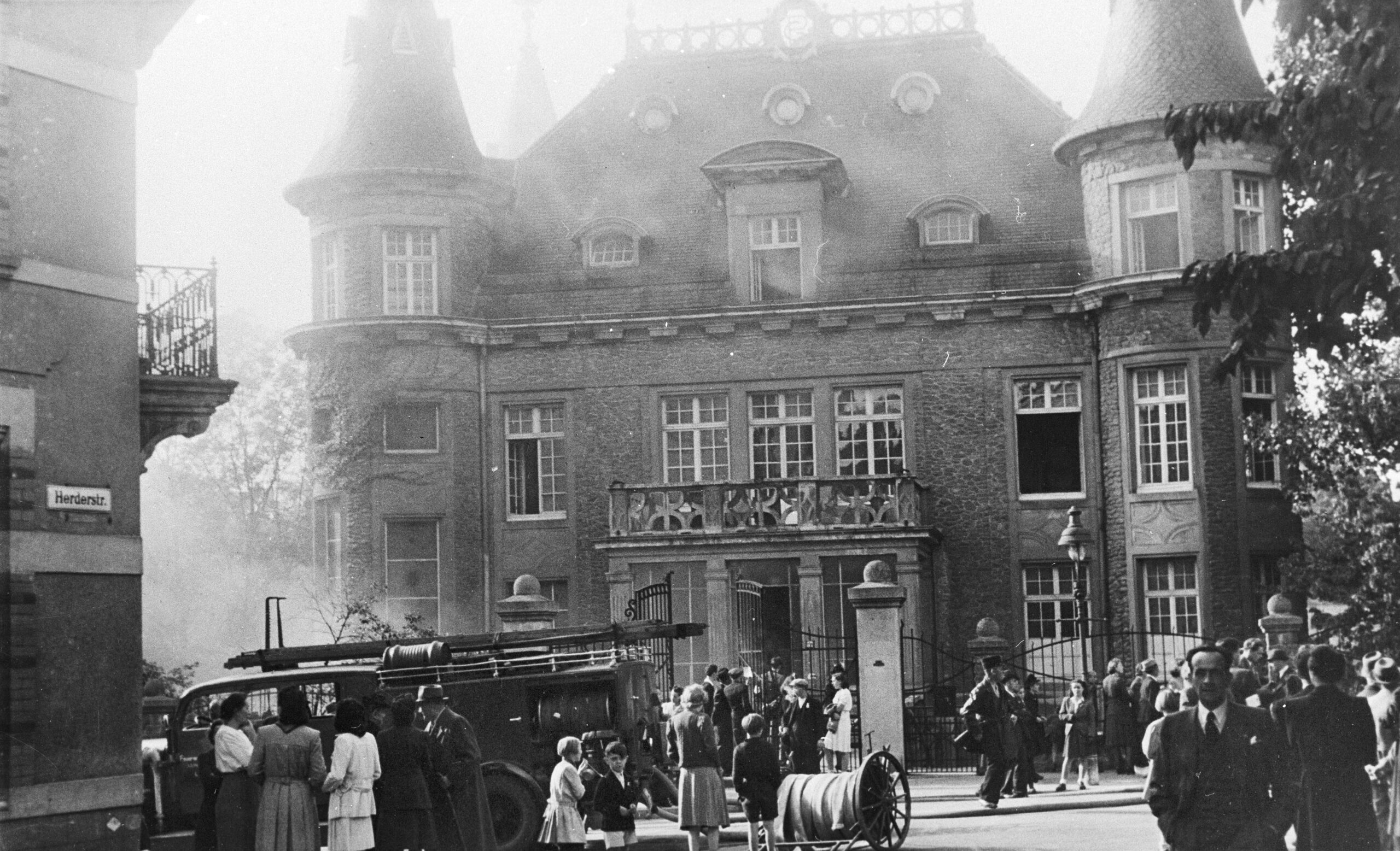
Header photo Gestapo headquarters in Villa Pauly, Luxembourg City. © Photothèque de la ville de Luxembourg. Author unknown
Gestapo crackdown
In 1942, the Nazis intensified crackdowns on resistance groups, including the LPL. Gestapo agents infiltrated the movement, leading to arrests of LPL members in Clervaux and surrounding areas. Many were sent to concentration camps or executed.
As a result, Pierre Schon and five other young men from his village of Doennange were rounded up on 5 May 1942 by the Gestapo and taken to their northern headquarters at the villa Conter in Diekirch for questioning. Pierre spent one night under arrest, during which he was interrogated for three hours and repeatedly beaten with an oxtail whip. Despite the brutality, he managed to convince his interrogators that he was not involved in the resistance, and they eventually released him. During this period of intensified crackdowns, it appears that many young men were detained and questioned in hopes they would confess, under duress, to being part of the resistance or to knowing someone who was.
Later, on 10 September 1942, Pierre was again arrested, this time by German customs officers for allegedly crossing the border at Hoffelt. He was held overnight at the prison in Troine, though no conclusive evidence was found. Once again, he was fortunate to be released relatively unharmed.
Detainees and suspected resistance members were interrogated and tortured by the Gestapo in Villa Pauly. Battered and fearing for their lives, they were interned in the cellar (picture below). Each cell contained just a wooden bench and virtually no light.
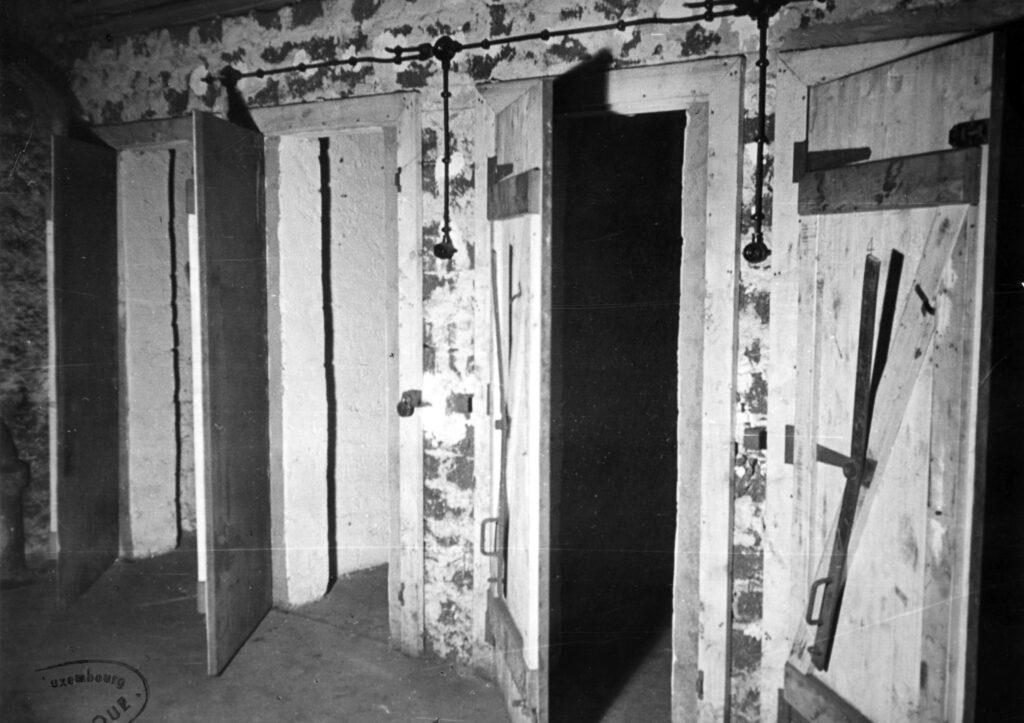
© Photothèque de la ville de Luxembourg. Author Tony Krier
Today a plaque can be found on the outside of Villa Pauly reminding passers-by of the resistance members who were tortured on the premises during the Nazi occupation.
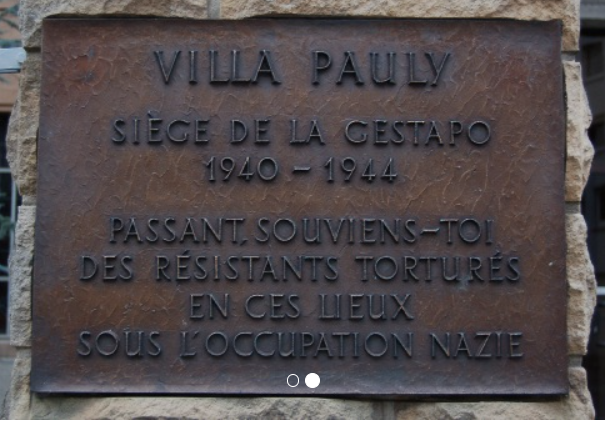
After having two narrow escapes, Pierre Schon must have felt that he was now on the Gestapo radar, the net was closing in and it was just a matter of time before he would be arrested and probably executed. That time would come six months later in early April 1943 when he had to use his wits, in-depth knowledge of the forest escape routes and contacts to flee for his life to Belgium with the Gestapo hot on his heels.
The Gestapo’s efforts to infiltrate and dismantle the resistance were widespread, but the LPL in Clervaux, along with other resistance groups, managed to maintain a level of secrecy about their leadership structure. Notably through decentralised leadership and use of pseudonyms.
The LPL continued its operations, adapting by using smaller cells and improvised safe houses.
General strike 1942
The LPL and other resistance groups, utilising the information co-founder Josy Fellens helped disseminate, called for a general strike on 30 August 1942, to protest against the German annexation and conscription plans. This was the only strike to take place in occupied Europe. It started in the leather factory in Wiltz and quickly spread through the whole country. This strike was a significant act of civil disobedience against the occupying forces. The strike took place end of August and early September 1942 and lasted for several days, paralyzing much of Luxembourg’s economy. While the Germans tried to suppress the strike through military force, the workers’ solidarity and determination made it difficult to quell the movement immediately.
Following the war, Pierre Schon admitted to the National Council of the Resistance that he had picked up several packets of leaflets from the Belgian border four days before the general strike which had been sent from Brussels by Alphonse Rodesch (friend and LPL co-founder) which he and other resistance members had distributed throughout the country.
In his book Quatre Années de Lutte (Four Years of Struggle), republished in 2011 by Amicale LPL, Alphonse Rodesch confirmed that the LPL had sent a message to the Luxembourg government in exile in London on 26 August via the Belgian resistance radio transmission service `Luc` saying that if they did not receive orders to the contrary, they would go ahead with the general strike. No counter order was received so the green light was given to print 10.000 flyers encouraging workers to strike and any forced conscripts to desert.
However, the Nazis retaliated harshly, more brutally than expected. They arrested many of the strike’s leaders and participants, and the repression that followed was severe: Thousands were arrested, many were sent to concentration or resettlement camps, with at least 21 people sentenced to death. They were executed by firing squad in Hinzert concentration camp, 30 kms from Luxembourg. Posters were displayed in Luxembourg by the Nazis announcing the names of the people who had already been executed that morning by firing squad as a warning to the population.
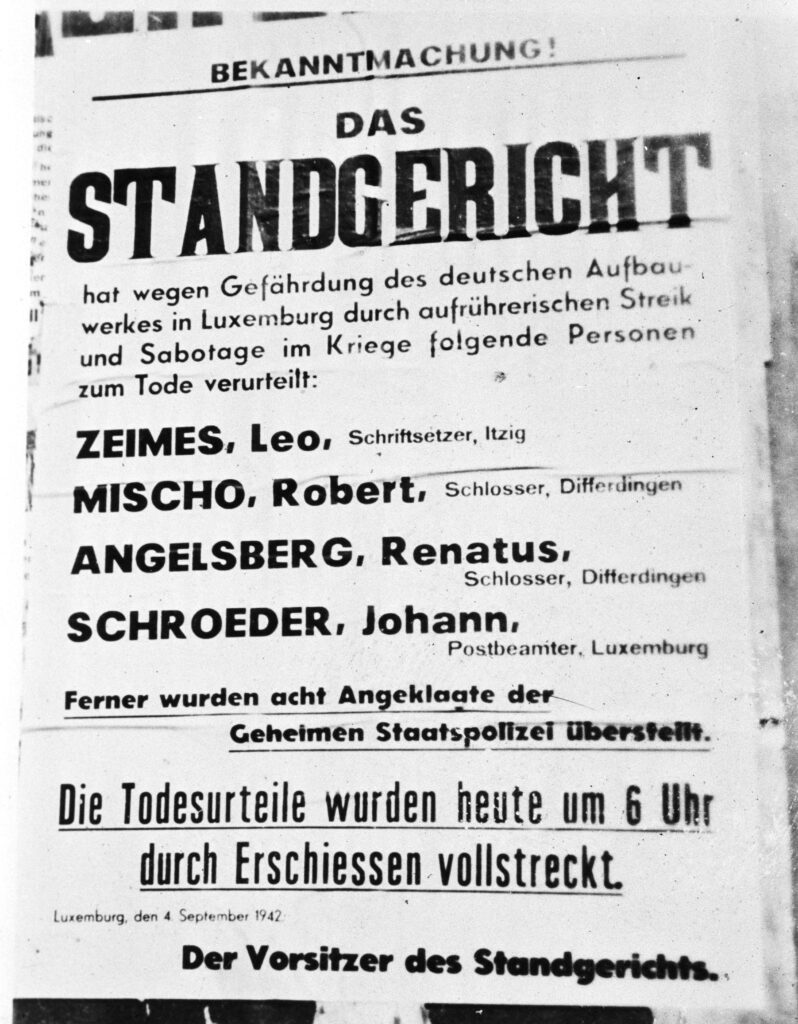
© Photothèque de la ville de Luxembourg. Author unknown
During this period, Pierre Schon collected money to support the families of the men who had been arrested by the Gestapo.
The German authorities also imposed severe punishment on the families of those involved, including the deportation of relatives to concentration or resettlement camps.
Despite the German repression, the strike demonstrated the courage and resilience of the Luxembourg people and marked a key moment in the country’s resistance to the Nazis.
In his book, Alphonse Rodesch wrote that already on 7 September, British foreign minister, Anthony Eden, sent a radio message to the Luxembourg people. `We in England have watched with admiration and sympathy the heroic resistance to Nazi tyranny of a small but brave people. You the people of Luxembourg are united in your hatred of Nazism. You have shown you want to remain what you were, a free people, and by your courage and resistance you have firmly established your right to do so`.
The government in exile leveraged the event to gain wide coverage in the British and American press. Luxembourg`s right to independence and freedom was recognised by the Allies.
Forced conscription
The Germans pushed ahead with forced conscription of Luxembourgers into the German armed forces on 30 August 1942. Over 10,000 Luxembourgers aged between 18 and 24 were conscripted against their will. Over 3,000 deserted and many turned to the resistance to help with an escape route to avoid capture and eventual forced labour, even execution. Well over 100 were helped by Pierre Schon to escape to Belgium with a new identity. Some even joined the Allied resistance.
Nearly 3,000 Luxembourg conscripts lost their lives during the war. Forcibly sent to the Eastern Front to bolster depleted forces, to fight the Soviet Union it was far more dangerous due to brutal conditions, massive Soviet offensives, and extremely high casualty rates. Between 1943 and 1945 for example, 1,900 Luxembourgers were held captive in Soviet camps. 1,000 of them were sent to the Tambov prisoner-of-war camp. 165 did not survive the conditions in the camp, another 38 died in the hospital of Kirsanow and 50 young Luxembourgers died on their way back home
Nazi Concentration Camp Hinzert
Situated 30 kms from the Luxembourg border, KZ Hinzert was located on the Hochwald plateau, 550 m above sea level, overlooking the Hunsrück mountain range and encircled by pine forests. The surroundings were humid, windy, bleak and freezing in winter.
In February 1942, command over the camp was transferred to the SS and it also then became a camp for the Gestapo for the Luxembourg and Trier area.
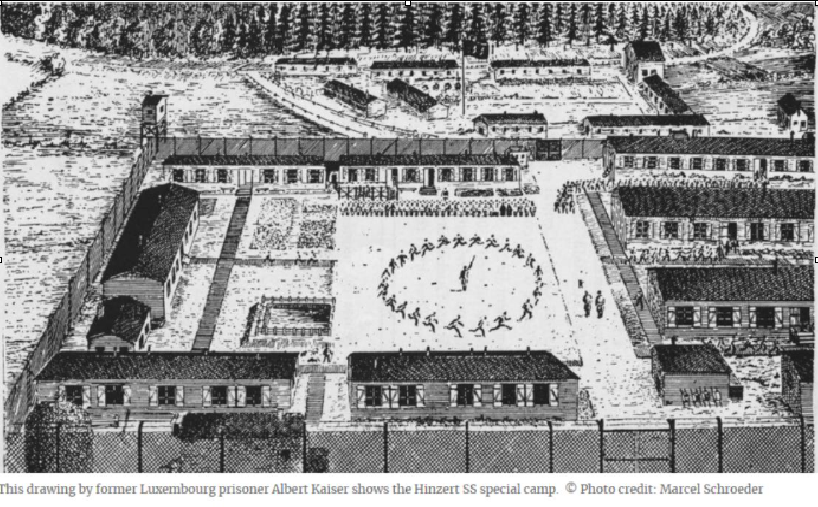
Between 1939 and 1945, 13,600 political prisoners between the ages of 13 and 80 were imprisoned at Hinzert. Many were in transit towards larger concentration camps where many would be killed. Others were Luxembourg political prisoners or conscripts who refused to join the German army. It is estimated that 1600 Luxembourgers were interned at some time in Hinzert and 82 died. However, many prisoners were also executed at Hinzert. On 25 February 1944 23 Luxembourg resistant leaders were executed by firing squad. The camp was administered, run, and guarded mainly by the SS, who, according to survivors, were notorious for their brutality and viciousness.
Pierre Schon’s best friend Léon spent two years doing forced labour at the camp after refusing to be conscripted into the German army. Despite it being “only” a transit camp, 321 prisoners were killed at Hinzert. Some put the numbers much higher. The victims were often shot in the surrounding forest, drowned or killed by lethal injection.
The bodies of 78 Luxembourgers executed at Hinzert (many resistance fighters), Klingelpütz prison Cologne and Preungesheim prison Frankfurt were exhumed and transferred back to Luxembourg on 9–10 March 1946. Along the route, citizens lined the roads, some wearing the striped uniform of camp prisoners, to pay tribute. The bodies were first laid temporarily at the Place d’Armes, in Luxembourg city centre, where dignitaries paid their respects, and were then buried in the Notre-Dame Cemetery. Source Wikipedia.

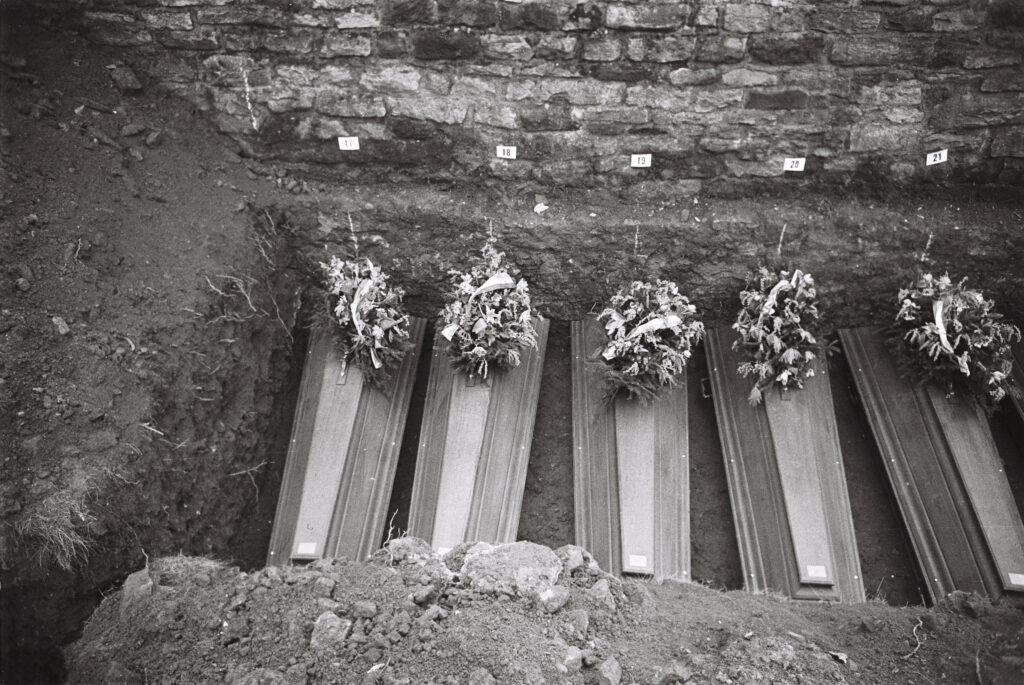

Photos © Photothèque de la ville de Luxembourg. Author Tony Krier
Remembrance ceremonies take place every year in the city of Luxembourg.